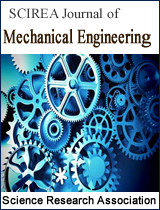Filament Winding Technique: SWOT Analysis and Applied Favorable Factors
DOI: 276 Downloads 121765 Views
Author(s)
Abstract
Filament winding technique is an automated composite fabrication technique, which is mainly used to produce tubular structure such as storage tanks, vessels, missiles and rocket motor cases. In recent 20 years, filament winding technique has developed as a mature fabrication technology, which is depended on various applied factors. Filament wound composite product applied fields are also influenced by different favourable factors. In this paper, a proper analysis method is carried out applied factors, which can enhance filament winding technique usage rate. Primarily, SWOT (Strength, Weakness, Opportunity, and Threat) analysis of filament winding technique is fully analysed. Secondly, all the applied favourable factors were classified and discussed under six categories, which relates the Wind Energy, Building & Construction, Mass Transportation, Chemical/Corrosion, Infrastructure, and Militray & Defense. Finally, applied favourable factors were discussed in details, and conclusion were summarized and highlighted, which can advance filament winding technique and increase filament wound composite product applied fields.
Keywords
Filament winding technique, filament wound composite product, SWOT analysis, applied favorable factors
Cite this paper
Ma Quanjin, M R M Rejab, M S Idris, Bo Zhang, Nallapaneni Manoj Kumar,
Filament Winding Technique: SWOT Analysis and Applied Favorable Factors
, SCIREA Journal of Mechanical Engineering.
Volume 2, Issue 1, February 2019 | PP. 15-25.
References
| [ 1 ] | R. M. Jones, Mechanics of composite materials. CRC press, 2014. |
| [ 2 ] | E. J. Barbero, Introduction to composite materials design. CRC press, 2017. |
| [ 3 ] | K. Benzarti and X. Colin, "Understanding the durability of advanced fibre-reinforced polymer (FRP) composites for structural applications," in Advanced Fibre-Reinforced Polymer (FRP) Composites for Structural Applications: Elsevier, 2013, pp. 361-439. |
| [ 4 ] | S. Sharma, L. Sowntharya, and K. K. Kar, "Polymer-Based Composite Structures: Processing and Applications," in Composite Materials: Springer, 2017, pp. 1-36. |
| [ 5 ] | H. E. Bersee, "Composite aerospace manufacturing processes," Encyclopedia of Aerospace Engineering, 2010. |
| [ 6 ] | A. Onder, O. Sayman, T. Dogan, and N. Tarakcioglu, "Burst failure load of composite pressure vessels," Composite structures, vol. 89, no. 1, pp. 159-166, 2009. |
| [ 7 ] | B. Middleton, "3 Composites: Manufacture and Application," Design and Manufacture of Plastic Components for Multifunctionality: Structural Composites, Injection Molding, and 3D Printing, p. 53, 2015. |
| [ 8 ] | S. T. Peters, Composite filament winding. ASM International, 2011. |
| [ 9 ] | M. Quanjin, M. Rejab, M. Idris, B. Bachtiar, J. Siregar, and M. Harith, "Design and optimize of 3-axis filament winding machine," in IOP Conference Series: Materials Science and Engineering, 2017, vol. 257, no. 1, p. 012039: IOP Publishing. |
| [ 10 ] | A. A. Talib, A. Ali, M. A. Badie, N. A. C. Lah, and A. Golestaneh, "Developing a hybrid, carbon/glass fiber-reinforced, epoxy composite automotive drive shaft," Materials & Design, vol. 31, no. 1, pp. 514-521, 2010. |
| [ 11 ] | A. Gloria et al., "Technical features and criteria in designing fiber-reinforced composite materials: from the aerospace and aeronautical field to biomedical applications," Journal of Applied Biomaterials and Biomechanics, vol. 9, no. 2, pp. 151-163, 2011. |
| [ 12 ] | M. Quanjin, M. Rejab, J. Kaige, M. Idris, and M. Harith, "Filament winding technique, experiment and simulation analysis on tubular structure," in IOP Conference Series: Materials Science and Engineering, 2018, vol. 342, no. 1, p. 012029: IOP Publishing. |
| [ 13 ] | M. L. Skinner, "Trends, advances and innovations in filament winding," Reinforced Plastics, vol. 50, no. 2, pp. 28-33, 2006. |
| [ 14 ] | D. Gay, S. V. Hoa, and S. W. Tsai, Composite materials: design and applications. CRC press, 2002. |
| [ 15 ] | D. Verma, "Processing Techniques of Nanoclay Based Natural Fibre Reinforced Polymer Composites," in Nanoclay Reinforced Polymer Composites: Springer, 2016, pp. 209-237. |
| [ 16 ] | T. Roberts, "The carbon fibre industry worldwide 2011-2020," Materials Technology Publications, Watford, vol. 6, p. 29, 2011. |
| [ 17 ] | S. Srivastava and S. Hoda, "A Brief Theory on Latest Trend of Filament Winding Machine," International Journal of Advanced Engineering Research and Science (IJAERS), pp. 33-38, 2016. |
| [ 18 ] | N. E. H. Shotton-Gale, "Clean filament winding: process optimisation," University of Birmingham, 2013. |
| [ 19 ] | A. Kayran and C. İbrahimoǧlu, "Preliminary study on the applicability of semi-geodesic winding in the design and manufacturing of composite towers," in Journal of Physics: Conference Series, 2014, vol. 555, no. 1, p. 012059: IOP Publishing. |
| [ 20 ] | K. Friedrich, N. Glienke, J. Floeck, F. Haupert, and S. Paipetis, "Reinforcement of damaged concrete columns by filament winding of thermoplastic composites," Polymers & polymer composites, vol. 10, no. 4, pp. 273-279, 2002. |
| [ 21 ] | M. Simic and N. Herakovic, "Experimental analysis of tribological behaviour of advanced composite spools used in commercial pneumatic spool valves," Tribology International, vol. 97, pp. 151-162, 2016. |
| [ 22 ] | A. Mosallam, A. Bayraktar, M. Elmikawi, S. Pul, and S. Adanur, "Polymer composites in construction: an overview," 2015. |
| [ 23 ] | P. Davies, "Behavior of marine composite materials under deep submergence," in Marine Applications of Advanced Fibre-Reinforced Composites: Elsevier, 2016, pp. 125-145. |

